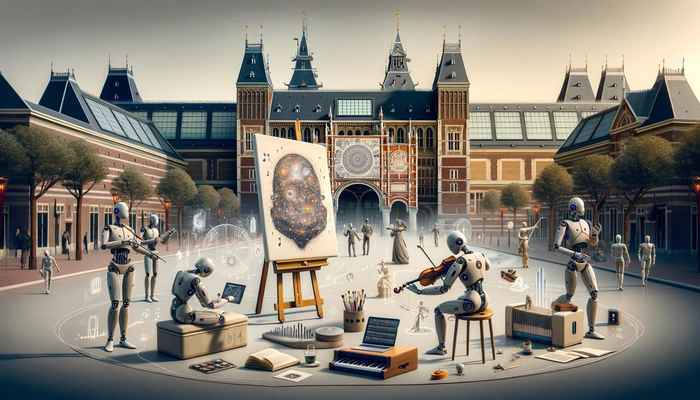How does GenAI change our notion of what creativity is?
10 november 2025

This is an interesting moment in the development of artificial intelligence, says professor of Data, Culture & Institutions Thomas Poell, who leads the conference’s organising committee. ‘For the first time, machines can generate coherent texts, create visually convincing images, produce short videos, and even complete musical compositions.'
'The widespread application of generative AI is changing the way cultural production and consumption take place, and it raises questions about new forms of creativity. At the same time, the rise of GenAI has raised widespread concerns about potential job losses, inequality in labor, ethical dilemmas, and the enormous concentration of power among a small number of large technology companies.’

For the first time, machines can generate coherent texts, create visually convincing images, produce short videos, and even complete musical compositions.Thomas Poell
Systems that support creativity
How creative can machines really be? ‘Creative behaviour is typically associated with producing something new, engaging, and somehow unexpected’, says keynote speaker Baptiste Caramiaux (Sorbonne University, France). ‘GenAI systems can generate images, text, sound, or video that people may perceive as “new” – but this does not capture the full spectrum of what we typically mean by human creativity. And, in fact, I do not think that is the real objective: most GenAI tools in the creative space are developed by private companies that are less interested in building machines that are creative, and more focused on building systems that support creativity.’
In that sense, Caramiaux says, “enhancement” is key. ‘For instance, AI can broaden access by enabling more people to produce high-quality content, speed up the process from idea to finished product, and leverage its general-purpose nature to open a wide range of creative possibilities. In practice, these features also create tensions, as they shift more decision-making to the systems themselves, often at the expense of artists’ agency.’
Time-consuming, frustrating and joyful all at once
How will GenAI, then, change our notion of creativity? ‘GenAI emphasizes automation and productive efficiency,’ says Caramiaux, ‘relying on readily available capabilities rather than skills that take time and effort to develop. But the creative process is inherently non-linear, time-consuming, frustrating, and joyful all at once. Current GenAI systems, as they are designed and marketed today, tend to want to preserve only the joyful aspects. I believe this can profoundly influence how creativity is valued at scale.’

Generative AI can lead to a culture that sees creative work as effortless and purely joyful.Baptiste Caramiaux
'This can lead to a culture that sees creative work as effortless and purely joyful', Caramiaux says, 'where the finished piece matters more than the process of making it. At the individual level, however, there will always be artists who cultivate creative practices with GenAI, which evolve over time and involve diverse appropriations and personal strategies in how these technologies are used.’
Artists play an essential role
It seems reasonable to assume that the role of human artists and creatives will evolve because of GenAI – but how exactly, that is a challenging question. ‘We do not yet have solid research on that, says Caramiaux, ‘but we can observe that artists’ relationships with GenAI have evolved and diversified. Ten years ago, artists using AI were often seen as hackers or bricoleurs. Today, we see hobbyists, entrepreneurs, and end-users among artists engaging with these systems.’
In some of their recent work, Caramiaux and colleagues have also shown that artists are more and more often having to take an ethical stance when it comes to generative AI.
‘GenAI is not just a neutral tool: it brings a set of cultural values that do not always align with artistic principles’, says Caramiaux, ‘such as the use of copyrighted data, high environmental cost, and its extractivist nature. At the same time, audiences have become more polarised, swinging between enthusiasm and fear. In this context, artists play an essential role in offering alternative stories and helping build a more thoughtful, constructive culture around technology. And they are not alone in this: I think researchers, too, play a similar role. Through the transparency and openness of scientific methods, researchers also shape how society relates to technology and creativity.’